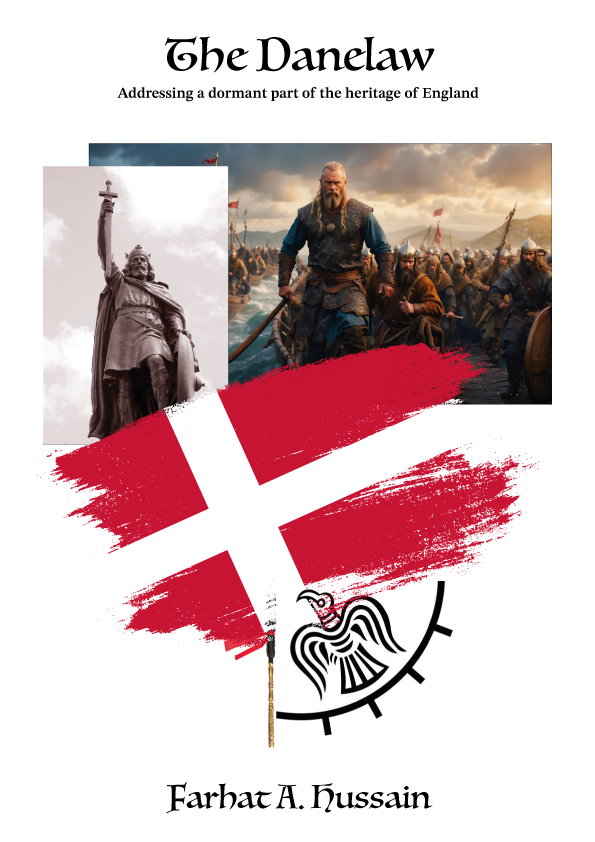
The Danelaw
Author: Farhat A. Hussain
Details to follow
Comprised of a substantive part of northern and eastern England, including also boroughs in the Midlands, the Danelaw was a place where the law and rule of the Danes ensued during the late- eighth to mid-ninth centuries following the arrival of many thousands of these people from their Scandinavian homeland during the Viking Age. This phenomenon impacted on the physical, cultural and political landscape and was of great significance for the unification of Saxon and Angle lands and people and the eventual emergence of a unified Kingdom of England. Following the latter, Danes remained to the eleventh century, during which time the whole of England was under Danish rule, under King Cnut. As a result of the Norman invasion of England in 1066, fearful of the Danes, many of the latter were killed or departed as a result of the ‘harrowing of the north.’ This destructive development was underpinned by the great anger of King William I towards the resilience of the Anglo-Danes and the depth they provided to Saxons and Angles who were unhappy with Norman rule and the Danish invasions and further potential incursions after 1066. Key and subtle issues and developments are outlined and analysed and the significance of the Danelaw for the history of England and its lasting cultural impact in language, including terms such as egg, window, field, ombudsman, cosy, hug, husband and many others, place names and settlements is demonstrated. This study peers into the time before the Norman conquest and its impact, including also the continuity of Danish presence and claims on England after 1066 that constituted the most significant challenge to Norman rule in its formative period. The manner by which the two oldest continuous kingdoms of Western Europe have been linked via land, rule and culture is highlighted and celebrated as is the vision and ability of King Alfred. A subject first engaged with during early childhood, as also the former border area between Saxon/Angle England and Danelaw that was visited on various occasions during that time, this subject has remained of interest to the author to the present-day. An outline is also provided of the benefits of celebration, reflection and revival of aspects of this cultural heritage whose historical depth is greatly underrepresented in heritage studies and society.